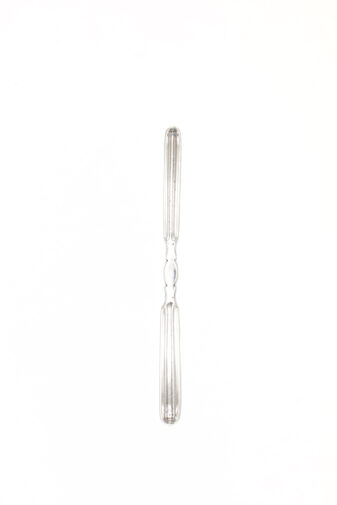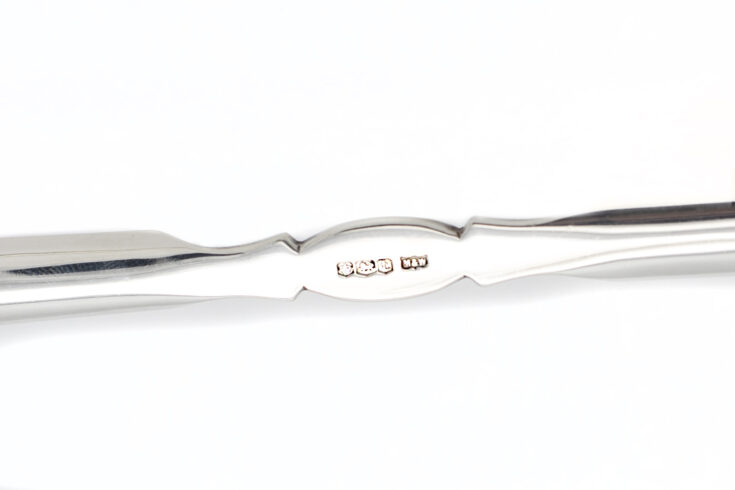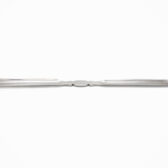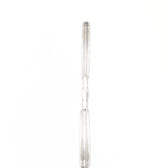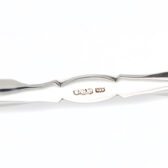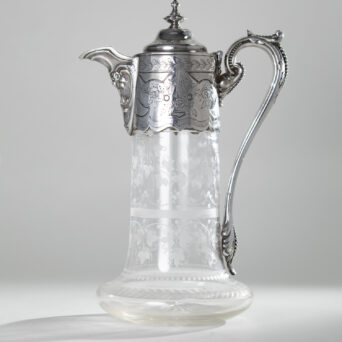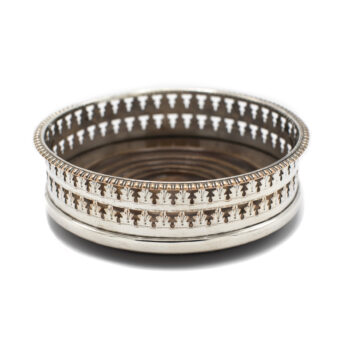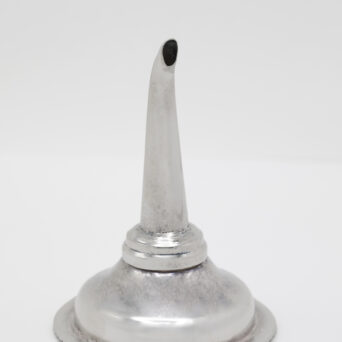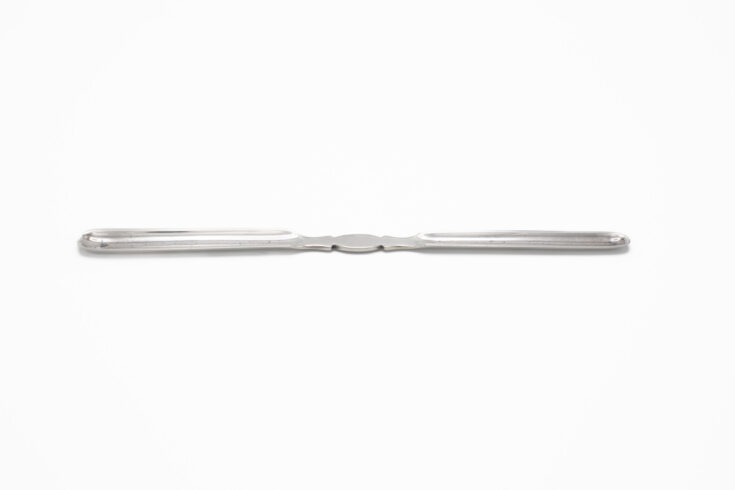
English Silver Marrow Scoop
During the 1600’s, etiquette at dinner parties was becoming more formal. Forks began to appear on the dining table to aid people when eating – allowing for a less hands-on approach! However, the fork could only do so much. It was in the 1680’s when this problem was rectified with the marrow spoon. The marrow spoon was created as a utensil, used to scoop out the bone marrow, which at the time was considered a great delicacy. Due to their popularity, marrow spoons began to be produced in mass quantities.
The marrow scoop itself was actually first seen at the start of the 18th century, and it replaced the marrow spoon. It is essentially two different size scoops joined in the center by a short stem. Its design soon became extremely popular and as with marrow spoons, they are also made in one piece.
A handsome and elegant English Silver 20th century Marrow Scoop. Most marrow scoops are simple in design, like this one, but occasionally you can find one with either shell or scroll motifs. Marrow scoops can be found in large antique flatware sets as well as being sold as individual pieces. Today, marrow scoops are used quite often for stirring cocktails.
